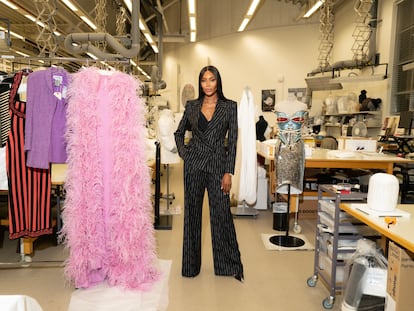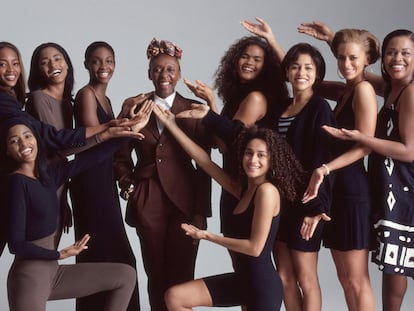Donyale Luna, the Black fashion pioneer who died at 33
The Moritz Feed Dog Festival’s winning documentary delves into the life of an African-American model carving a career in a climate riddled with prejudice
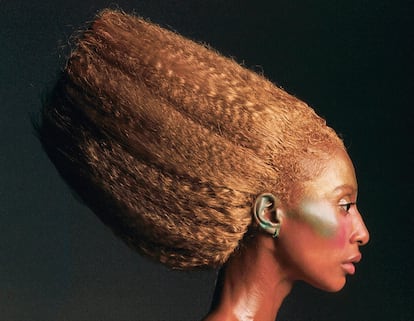
It is likely that we have come across Donyale Luna’s photographs at some point. An impossibly leggy woman with a piercing gaze, she was the first Black supermodel to work with Andy Warhol, Richard Avedon and Federico Fellini. But why does her name not ring a bell? This is precisely the question posed by the documentary Donyale Luna: Supermodel, screened as part of the eighth edition of the Moritz Feed Dog Festival in Barcelona and awarded the festival’s top prize in its category.
The film’s producer, Melissa Kramer, was intrigued by an image of Donyale Luna at an exhibition. “I looked her up online and went round in circles,” she says. “I’m a creative consultant in fashion publishing and couldn’t believe I didn’t know her. I asked other experienced colleagues, and they hadn’t heard of her either. So I started researching until I became totally obsessed.” The information she unearthed was confusing, but she learned that the late model’s husband, Luigi Cazzaniga, lived in New York and she managed to meet him for coffee. After spending an afternoon in conversation with him, she knew that in order to explore Donyale Luna’s life further, she had to shoot a documentary. “Her work as a model is only part of her incredible story,” explains Kramer.
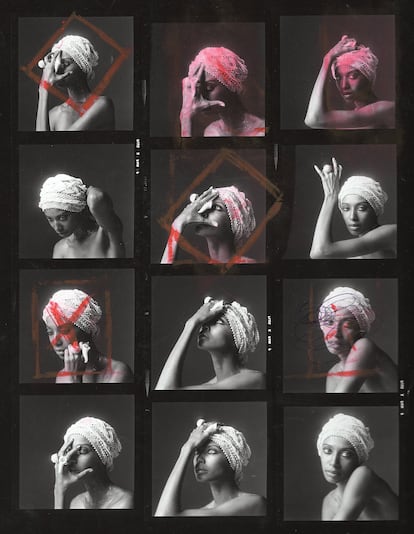
The documentary’s director, Nailah Jefferson, faced other challenges. “The media’s treatment of her was sensationalist and not entirely accurate, and we had to rely on her personal diaries to dismantle falsehoods,” she says. “It was also difficult to find people who knew her personally. Many of them are no longer alive, and others want to remain below the radar because their physique is different from what it was when they worked in fashion. We have to respect that,” she says. After years of research, the team managed to contact family, friends, roommates and colleagues like models Beverly Johnson and Pat Cleveland, who knew and admired Luna.

Born in Detroit in 1945 to a working-class family, Peggy Ann Freeman was discovered as a teenager on the street by British photographer David McCabe. Two years later, she was in New York and just a few months after that, she was the Harper’s Bazaar cover, frequented Warhol’s Factory and had signed an exclusive contract with Richard Avedon, the most sought-after fashion photographer of that period. Peggy had become Donyale Luna.
However, along with the opportunities came obstacles. At the height of African-American civil rights activism, Harper’s Bazaar advertisers complained about the images of Donyale Luna and threatened to pull their advertising. In a bid to escape such discrimination, Donyale moved to Europe, where she reinvented herself to become Peggy Anna Donyale Zazia Luna Freeman. According to U.S. model Pat Cleveland, “It was a mirage, a sort of fantasy, going into restaurants people would stop eating to stand up and applaud.”
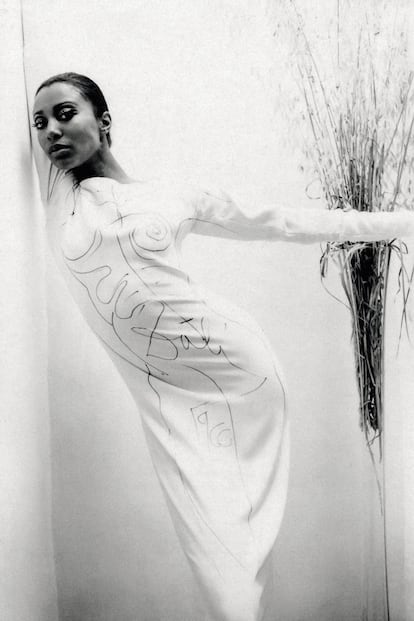
In London in the mid 1960s, she became the first Black model to grace the cover of British Vogue photographed by David Bailey, and she collaborated with the Rolling Stones on their film Rock’n’Roll Circus. In Paris, she acted in William Klein’s film Who Are You, Polly Maggoo, met Dalí and worked with Paco Rabanne. Around that time, she was poised to participate in the most expensive fashion photo shoot to date, Vogue’s The Great Fur Caravan, but at the last moment editor Diana Vreeland dropped Luna. When Avedon protested, Vreeland cruelly compared Donyale Luna to King Kong. “Veruschka, who was eventually chosen, was very professional, but Luna would have had more impact,” Kramer says. “Avedon was a civil rights advocate and in his archive you can see how hard he fought for her and how much it pained him to see her rejected.”
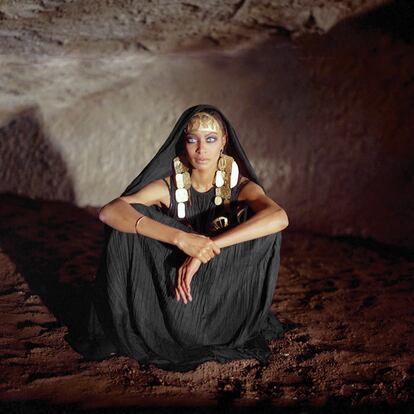
“Donyale Luna was subjected to other similar experiences that we couldn’t mention in the footage because we couldn’t find anyone to corroborate them on camera,” says Jefferson. “The editor of French Vogue wanted to give her the cover and they vetoed it from above. After all, it was a U.S. media outlet whose influence reached Europe. It was all about money and they didn’t have the courage to dispute that.” These challenges along with a devastating family tragedy made Luna retreat further into a fantasy world. She moved to Italy, where she created art pieces, acted in avant-garde theater and worked with Fellini. It was there that she met her husband, Luigi Cazzaniga, with whom she had a daughter, Dream. Sadly, in 1979, 18 months after becoming a mother, Luna died of an overdose. She was 33.
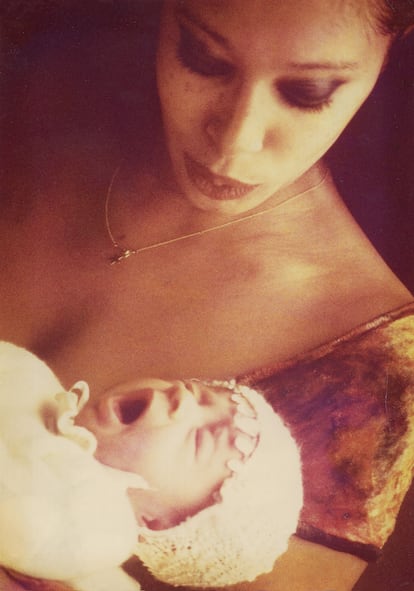
Now a sustainability consultant living with her two daughters in France, Dream Cazzaniga shed her reluctance to talk about the loss of her mother when she met the documentary team: “They approached the project with care and respect,” she says. “In fact, during the process I felt very close to my mother’s vibe — her tremendous determination — which was pushing me to tell the story of who she really was. Her life also had light. I’m proud of the fact that she didn’t let others define her, that she didn’t accept the roles they wanted to impose on her.”
Aside from exceptions like celebrity stylist Law Roach, who has explicitly referenced Donyale Luna in some of his collaborations with U.S. actress and singer Zendaya, fashion history has little to say about this trailblazer. “Black women’s achievements can be lost because they are not considered important,” says Kramer. “She was ahead of her time and misunderstood professionally and personally. At that time, they didn’t know what to do with someone like that.”
According to Jefferson, it is important that Luna’s story is told so that situations similar to those she experienced are not repeated. “The injustice is that if more girls had known about her, and had seen themselves represented, we would now have a larger group of Black models,” says the director. “What I learned from this project is that Luna chose not to shrink or camouflage herself. I hope we can all be as brave as she was.”
Sign up for our weekly newsletter to get more English-language news coverage from EL PAÍS USA Edition
Tu suscripción se está usando en otro dispositivo
¿Quieres añadir otro usuario a tu suscripción?
Si continúas leyendo en este dispositivo, no se podrá leer en el otro.
FlechaTu suscripción se está usando en otro dispositivo y solo puedes acceder a EL PAÍS desde un dispositivo a la vez.
Si quieres compartir tu cuenta, cambia tu suscripción a la modalidad Premium, así podrás añadir otro usuario. Cada uno accederá con su propia cuenta de email, lo que os permitirá personalizar vuestra experiencia en EL PAÍS.
¿Tienes una suscripción de empresa? Accede aquí para contratar más cuentas.
En el caso de no saber quién está usando tu cuenta, te recomendamos cambiar tu contraseña aquí.
Si decides continuar compartiendo tu cuenta, este mensaje se mostrará en tu dispositivo y en el de la otra persona que está usando tu cuenta de forma indefinida, afectando a tu experiencia de lectura. Puedes consultar aquí los términos y condiciones de la suscripción digital.
More information
Archived In
Últimas noticias
Trump clarifies who is ultimately in charge in Venezuela: ‘Me’
Maduro pleads not guilty before the federal court in New York: ‘I am still the president of Venezuela’
A new test can detect Alzheimer’s from a finger prick
UN team enters Sudanese city of El Fasher after paramilitary massacre: ‘It’s like a ghost town’
Most viewed
- Gilles Lipovetsky: ‘If you want to live better and fall in love, take Prozac, don’t look to philosophy’
- Alain Aspect, Nobel laureate in physics: ‘Einstein was so smart that he would have had to recognize quantum entanglement’
- Alvin Hellerstein, a 92-year-old judge appointed by Bill Clinton, to preside over Maduro’s trial in New York
- Why oil has been at the center of Venezuela-US conflicts for decades
- Cuba confirms death of 32 of its citizens in the US attack against Venezuela
